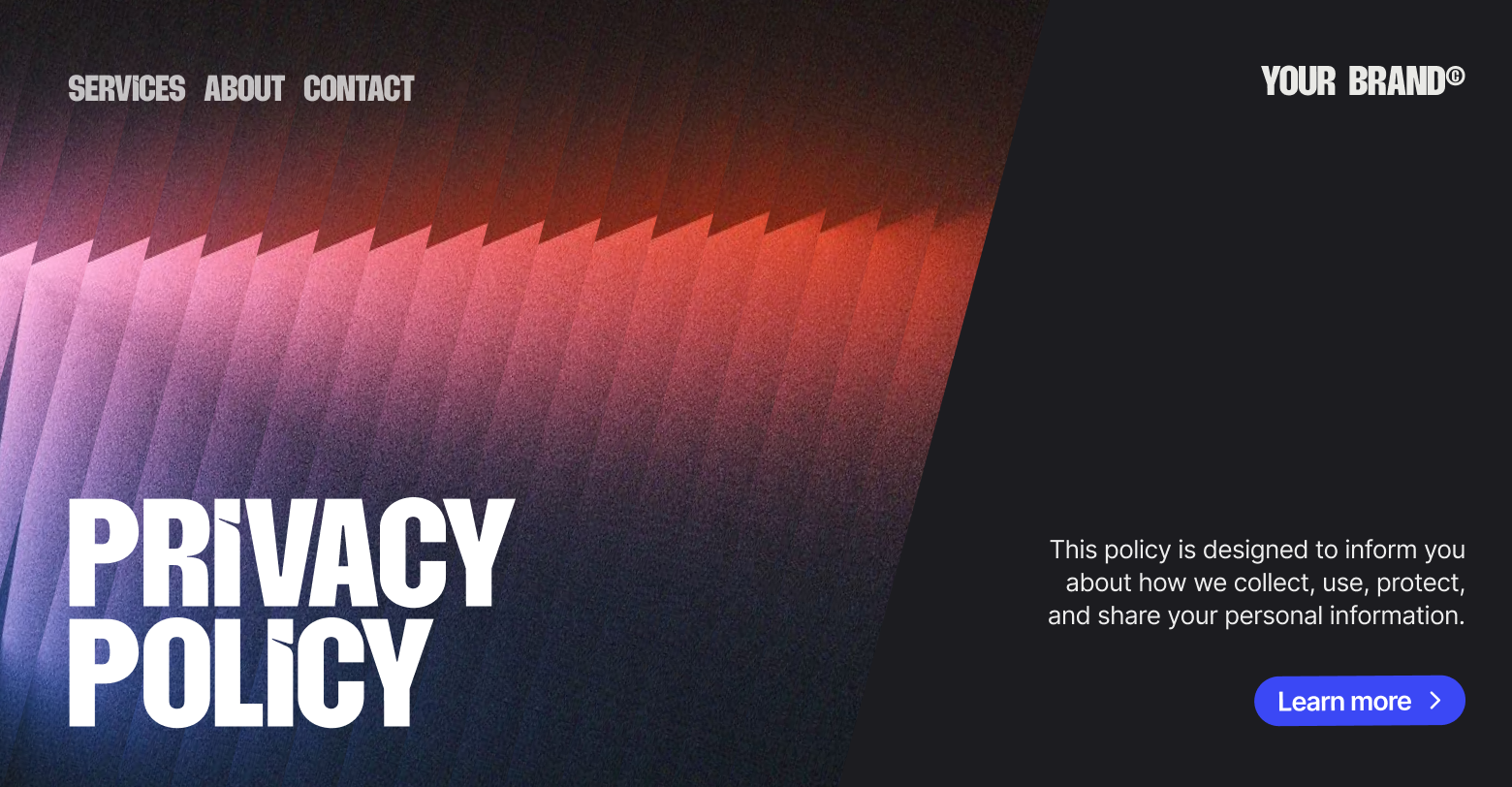This guest blog is published in honor of Data Privacy Week, sharing valuable insights from our partner on data privacy.
For website owners, data privacy represents one of the most crucial challenges, but it’s also an opportunity.
Prioritizing data privacy proves to your users that you respect their privacy and value their choice and control over their personal information, which builds loyalty and trust.
But it's difficult to keep up with this complex industry unless you’re deeply immersed in the world of information security and data protection. It’s constantly impacted by new technologies, shifting global regulations, and increasing customer awareness.
As a certified Data Protection Officer who is immersed in it, I recognize the hurdles but also see exciting possibilities ahead. To help equip website owners with the necessary insights for success, I explore the future outlook of data privacy, including the significant trends shaping the industry and the technological innovations impacting it.
The data privacy landscape constantly evolves
A constant trend in the data privacy industry is the ongoing evolution of the legal privacy landscape.
The first comprehensive consumer privacy law passed in 2018 was the
General Data Protection Regulation (GDPR). We’ve seen a growing number of privacy legislation introduced and amended ever since.
For example, the GDPR inspired federal laws in countries across the globe, like
Brazil’s General Data Protection Law and
South Africa’s Protection of Personal Information Act.
Even though there’s no federal legislation, several U.S. states have enacted comprehensive consumer privacy protection laws, and increasing calls for overarching privacy protections from American consumers are reflected in
data privacy statistics.
Moving forward, I predict we’ll see even more convergence in data privacy frameworks.
Setting up standard privacy best practices on your website today will make it easier to adapt when more privacy regulations occur in the future.
Stricter enforcement and larger penalties
I also expect regulators to be more active and aggressive in enforcing privacy laws.
The consequences for noncompliance were proven very real in 2023 when a €1.2 billion fine was imposed on Meta for violating the GDPR.
As new technologies like AI and other data-driven processing systems continue to evolve, I expect legal enforcement to ramp up quickly. If you’re not already prioritizing data privacy, I encourage you to rethink your approach.
AI regulations impact on data privacy
Now that the EU AI Act is in effect, I expect to see a trend of legislation being introduced regulating artificial intelligence.
The EU AI Act may serve as a global template, similar to the GDPR. But because website owners now rely on AI for different purposes and functions, paying attention to this trend is important for your future success.
Privacy-enhancing technology innovations
An industry trend that should assist website owners is an increase in privacy-enhancing tools and technologies specifically meant to allow entities to process information without exposing sensitive personal data, for example:
- Homomorphic encryption
- Differential privacy
- Multi-party computation
I expect to see more of these features integrated into platforms so they’re more accessible to smaller businesses.
Prioritizing privacy will give websites a competitive edge
Your website visitors know their personal information gets collected, tracked, and used online.
Websites that prioritize data privacy and are transparent about their data processing activities will have an easier time building trust and loyalty with users.
I predict that in 2025, websites that don’t catch up and use essential data privacy solutions like a privacy policy, consent banner, and cookie policy will be considered insecure by the average consumer. They will be more likely to spend their time and clicks on websites with honest, updated privacy policies and a consent preference center.
You can use a
privacy policy generator to make your policy and a
consent management platform to handle consent on your website.
Shifting how websites handle sensitive data
I predict websites handling sensitive data will have to shift how they obtain the information and manage user consent preferences.
With the increase in data breaches and leaks, I expect to see more ‘zero-trust’ architectures. In other words, requests must all be authenticated, authorized, and encrypted.
The intention of this shift will likely be to prevent and mitigate cybercrimes and lead to more secure data storage systems.
More reliance on privacy automation
Because personal data is used in nearly every industry and by businesses large and small, I predict there will be a heavier reliance on privacy automation tools.
Manual compliance is often too time-consuming, costly, and difficult for many businesses and website owners.
Comprehensive, reliable privacy compliance solutions, like Termly’s Consent Management Platform, for example, will become more integral for websites wanting to integrate data privacy best practices and make compliance seamless.
More emphasis on privacy education and ethics
As we move through the new year, I expect to see more emphasis on educating website owners, businesses, and entire teams about ethical data privacy practices.
This will likely include more investments in ongoing employee training, awareness campaigns, and an increase in attaining various privacy certifications.
By adding privacy education into the culture of our various workforces, we’re participating in a pivotal role in ensuring data privacy doesn’t take a backseat to innovation.
Actionable steps to prioritize data privacy
Keeping these trends and predictions in mind, here are some practical steps to prepare your website for the future of data privacy.
- Conduct regular privacy audits: Review your data collection, storage, and processing practices to ensure compliance with the latest regulations and proactively identify and fill security gaps.
- Invest in privacy-first website software: Look for tools prioritizing user privacy, like built-in PETs, automated compliance features, and secure data storage.
- Be transparent in your data processing activities: Communicate how you collect, use, and protect user data in a transparent privacy policy and obtain legal consent from your consumers.
- Stay educated and informed: Data privacy laws and technologies are constantly evolving, so stay updated by subscribing to industry newsletters, attending webinars, and consulting with privacy professionals.
- Use data ethically: Adopt ethical guidelines for data use and build it into the culture of your website and team. For example, only collect the necessary data and respect your users' consent preferences.
Prepare your website for the future of data privacy
As we navigate the data privacy challenges of 2025, it’s clear that the future belongs to those who adapt and innovate. For website owners, this means staying ahead of regulatory changes, embracing innovative technologies, and prioritizing user trust.
Despite the complexities of this journey, it opens an opportunity for you to differentiate your brand by contributing to a more privacy-literate ecosystem, so your website users feel confident visiting, engaging with, and trusting your site.
Let’s embrace the future together, with transparency, accountability, and innovation leading the way.







